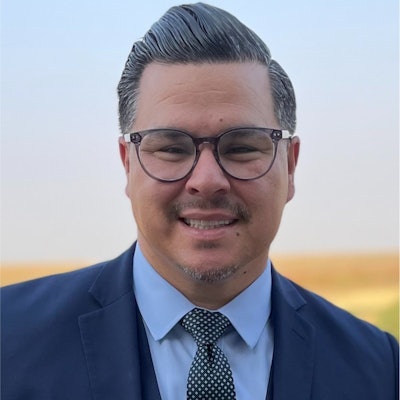My journey from the barrios of Albuquerque to a career in higher education is a testament to the power of commitment—and coaching.
I’m the product of two worlds. On my father’s side of the family, I’m a third-generation college graduate whose aunt was a law school professor. But I was raised in concentrated poverty by an undereducated and underpaid single mother. At the largely Chicano, Mexican, and Hispanic high school I attended, the influence of gangs and familial responsibilities meant that far too many of my classmates had little hope beyond the neighborhoods they were forged in.
With support from one great math teacher and several of my high school coaches, I went on to earn three degrees at three separate Hispanic-Serving Institutions. But for an unlikely invitation to attend a “diversity day” at Colorado Mesa University, my path might have led to a much different place. Roberto Montoya
Roberto Montoya
In some ways, HSIs resemble my hometown because they support, educate and instill hope in Latine students, who now make up a significant and growing share of the nation’s college-going population. Yet these institutions also struggle with inequities that threaten to subvert their mission and derail the college dreams of millions of Latine Americans. As the ranks of HSIs grow and enroll even more students, it’s long overdue that we begin to operationalize the concept of “servingness” as a central factor to the success of these institutions.
“Servingness” has been amplified by several leading HSI scholars, including Dr. Gina Ann Garcia, a Berkeley School of Education professor whose books and articles help to define what it means to be an HSI in the context of the term. The federal government, on the other hand, uses a straightforward numerical definition to classify as Hispanic Serving Institutions any two- or four-year nonprofit degree-granting college or university where enrollment is at least 25% Latine.
This simple enrollment threshold, coupled with an increase in the Latine population in higher education, has caused the ranks of HSIs to swell — from less than 200 in 1990, when the U.S. Department of Education first introduced the designation, to more than 570 today. Another 400 institutions, according to research compiled by Excelencia in Education, are considered emerging HSIs because they’re quickly approaching that enrollment benchmark.
But enrollment is just the first step in the journey toward servingness. Because the federal government mandates minimal accountability to HSIs, “HSIs themselves are most often the ones to define servingness in practice,” Garcia writes. As institutions endeavor to support their students in ways that promote engagement, persistence and graduation, they must operationalize servingness as a broad range of experiences that foster a sense of belonging and representation. The essence of servingness is about more than just enrollment. It’s about comunidad (community), cultura (culture), and accountability.
But achieving these goals isn’t something that can be simply wished in. HSIs must proactively and rigorously inspect their own policies and practices. Institutions must identify and break down the countless sociocultural, financial, and bureaucratic barriers that can stand in the way of college access and completion. Because servingness is less formulaic and more akin to a mosaic, institutional policies must be nuanced, multidimensional and responsive.
Investing in diversity among faculty, staff and administrators is a critical component. Part of making good on the promise of college access and completion is about ensuring Latine students feel a deep sense of belonging and support. Building a teaching and college workforce — not just adjuncts and junior staff but full-time tenured faculty and senior institutional leaders — that looks like the students we serve can help us to live up to that goal.
At the heart of it, servingness is about institutions centering the complex needs, experiences and aspirations of Latine learners. Indeed, the growth of HSIs obscures outcome disparities. Latine students graduate from college at lower rates than many of their peers. HSIs graduate slightly more than 40% of their students, well short of the national average. Servingness, then, is about institutions providing educational experiences and support that are culturally relevant to their students and can foster a sense of belonging and self-determination.
Wraparound support can be a key strategy to help more HSI students successfully navigate postsecondary education. Coaching is one example of how we can bridge resource gaps to enable students from diverse backgrounds to self-actualize. Research has demonstrated that coaching interventions significantly improve learner outcomes, particularly among underrepresented learners who encounter systemic barriers.
In my own life, the unwavering support and influence of my aunt was crucial to my own success. Margaret Montoya, my father’s sister, was the first Latina to be accepted to Harvard Law School. She went on to become a law professor at the University of New Mexico. My Tía Margaret coached me throughout my academic career, from my undergraduate days to my pursuit of a doctorate. She drove me to recognize and achieve my educational potential. I know how fortunate I am to have had her guidance. I also know that far too many of my peers lack their own Tía Margaret.
As we celebrate National Hispanic Heritage Month, it’s time to reflect on the rapid progress that HSIs have made — as well as the work that remains to ensure that every Latine student can achieve their goals for their education and their careers. And celebrating the spirit of “servingness” is a great place to start.
Roberto Montoya is Associate Vice President of Partner Success at InsideTrack






















